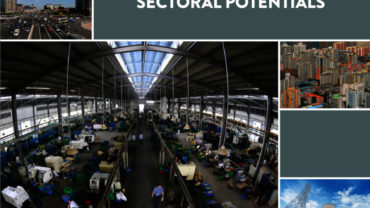Copenhagen Centre on Energy Efficency has released two new publications, Enhancing Energy Efficiency in India: Assessment of sectoral potentials and Enhancing Energy efficiency in China: Assessment of sectoral potentials, which are part of the China and India Energy Efficiency report series that emerged from the High Impact Opportunities studies supported by the UNEP DTU Partnership in China and India.
Energy efficiency delivers not only reductions in energy consumption and emissions, if implemented properly, it will also provide opportunities for economy-wide multiple benefits, such as improved health and well-being, cleaner air and more jobs.
In terms of the future growth of energy and related greenhouse gas emissions, China and India stand out from other countries, due to their rapid economic development, large populations, rapid urbanization and growing industrial sectors. Both countries are focused on decoupling both energy use and emissions from economic growth. In their Intended Nationally Determined Contributions submitted under the Paris Agreement, both countries have included strategies to pursue improved energy efficiency across the main sectors of their economies.
In the publications, for each sector, the studies identify key high-impact opportunities (HIOs) for improvements in energy efficiency, some technical, others structural. The technical HIOs are those based on specific technological improvements, such as more energy-efficient housing and more fuel-efficient cars. The structural HIOs involve changes in product mix and service mix, such as reducing the overcapacity in energy-intensive industries and increasing the use of public transit for passenger transport. Moreover, for each sector, the report also identifies barriers to the realization of the HIOs and offers a set of recommendations for how to address them.


